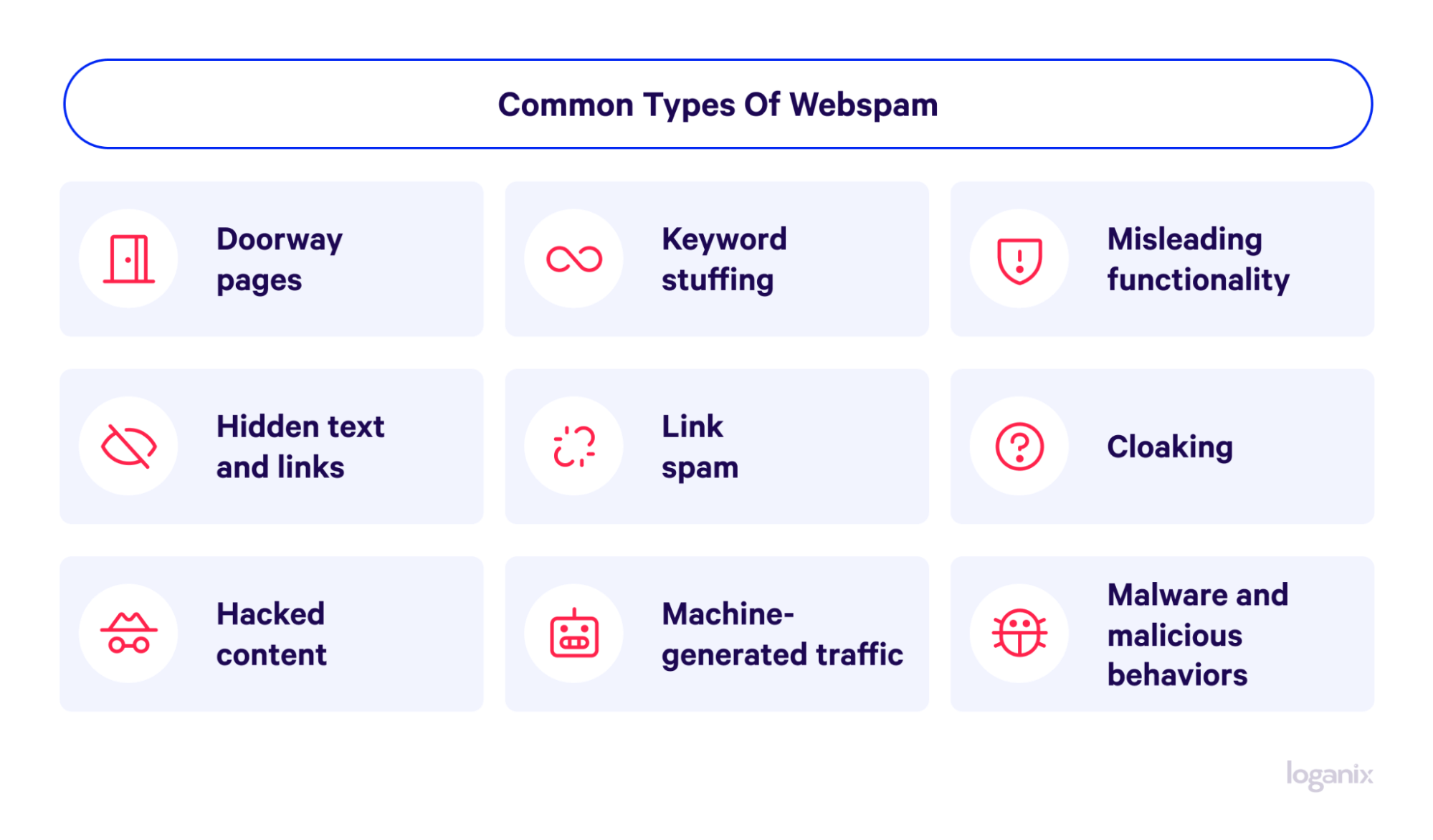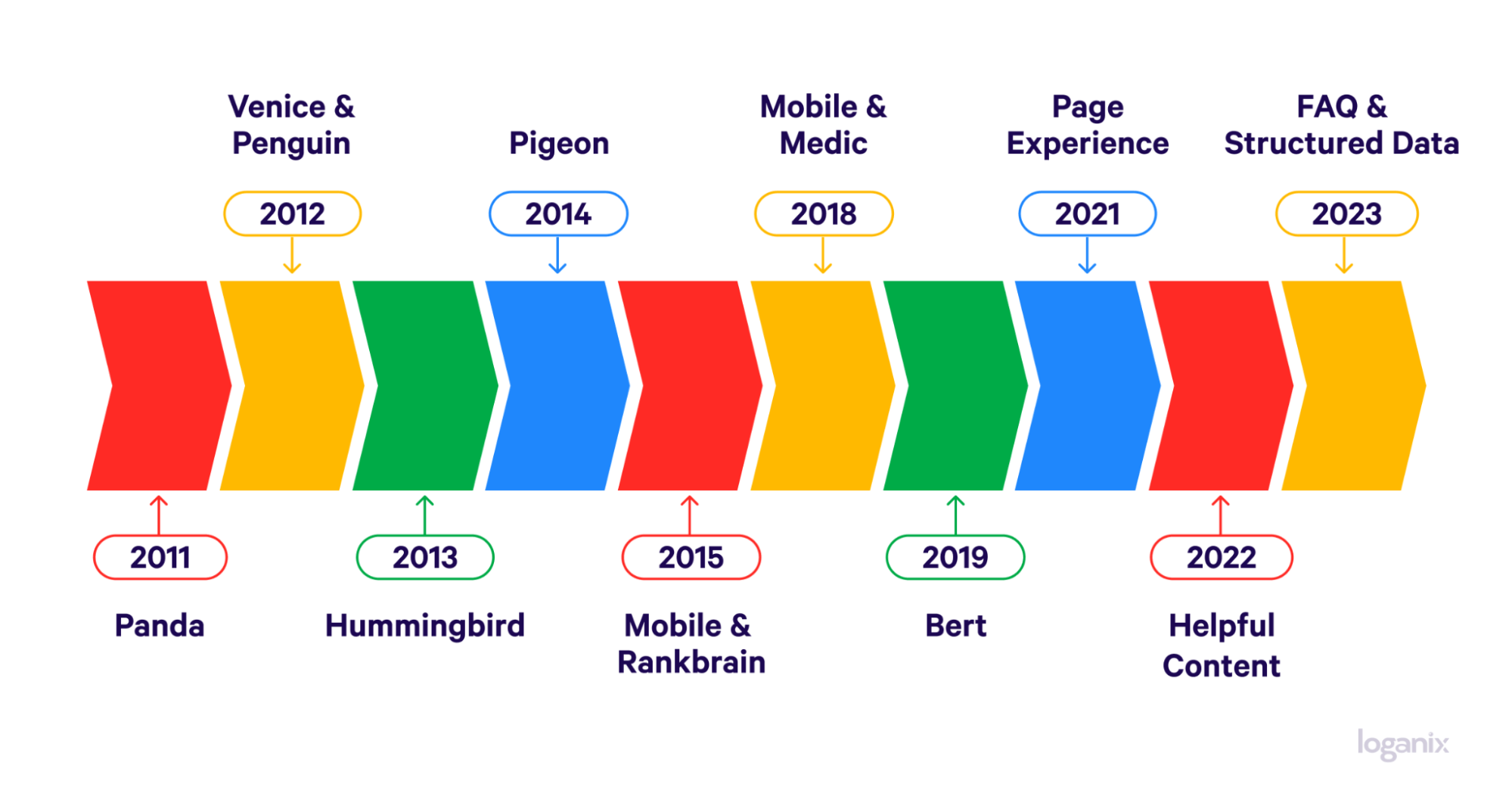What Is Webspam? Black-Hat SEO’s Unethical Practices Exposed

Hand off the toughest tasks in SEO, PPC, and content without compromising quality
Explore ServicesEver conducted a search that returned results that felt just…off? The title seemed promising, but the web page underdelivers. It’s so bad that you close the tab wondering, “How did that even rank?”
If this sounds familiar, you’ve probably stumbled across webspam—the content equivalent of junk food.
To help you identify and avoid inadvertently creating this type of content yourself (you wouldn’t do it on purpose, right?), here’s what I have in store for you:
- A no-fluff, just facts answer to the question, “What is webspam?”
- A dissection of the different flavors of webspam.
- Handy tips on how to steer clear of webspam content pitfalls.
What Is Webspam?

Webspam, search spam, spamdexing, search engine poisoning, and black-hat search engine optimization (SEO). Basically, it’s all the same thing—the manipulation of search engine rankings using unethical practices that prioritize quick wins over user experience and genuine value, often at the expense of the end user (that’s you and me).
Conversely, white-hat SEO practices center around complying with Google’s spam policies, meaning genuine value is added to the search engine results pages (SERPs), user experience is focused on, and high-quality content is the end result. Google calls it people-first content. The ideology: what’s good for the user is good for rankings.
That’s the general idea, anyway.
Learn more: Interested in broadening your SEO knowledge even further? Check out our SEO glossary, where we’ve explained over 250+ terms.
Common Types of Webspam

As outlined in the company’s spam policies, here are the common types of webspam according to Google:
Deceptive Content Tactics
- Doorway pages are created to rank for specific, similar search keywords, leading users to less useful intermediate pages.
- Keyword stuffing overloads web pages with excessive keywords or numbers to manipulate search rankings.
- Misleading functionality uses deceptive practices that mislead users about the functionality or content of a website.
- Scraped content involves copying and republishing content from other websites without permission or attribution.
- Spammy automatically-generated content creates content automatically with the intent to manipulate search rankings, often lacking in quality and relevance.
- Thin affiliate pages with little or no original content that exist primarily to send users to affiliate sites.
Link Manipulation Tactics
- Hidden text and links are invisible to human users while being detectable by search engines.
- Link spam manipulates search rankings, including excessive link exchanges or using automation to create links for ranking purposes.
Other Unethical Practices
- Cloaking involves showing different content to search engines and users, often to manipulate search rankings or mislead users.
- Hacked content is unauthorized content placed on a site due to security vulnerabilities, potentially leading to harmful search results or malicious content installation.
- Machine-generated traffic generates automated queries to Google or other forms of automated access to Google Search without explicit permission.
- Malware and malicious behaviors involve websites hosting nefarious software or behaving in a way that negatively impacts the user experience.
- Sneaky redirects redirect users to different pages or websites than the ones they intended to visit, often without their knowledge or consent.
- User-generated spam content created by users, such as in comments, forums, or user profiles.
Search Engines’ Battle Against Webspam
Search engines are in the business of selling ad space. At the time of writing, advertising accounts for 78.5 percent of Google’s yearly revenue. Selling ads teeters on user trust and satisfaction. If users encounter search results that recommend web content that’s continually spammy, unhelpful, and even malicious to the device the user is using to access the search engine, their trust will likely diminish, potentially driving them to a competitor’s product, like Bing or Duckduckgo.
The effect of this scenario at scale could impact the attractiveness of Google as an advertising platform. Google’s latest Webspam Report reveals Spambrain five times more spam sites compared to the year before. So, as you can imagine, the fight against webspam is a continuous and evolving battle that Google and other search engines take very seriously.
To combat webspam, search engines employ a variety of sophisticated methods and strategies.
Detection and Prevention Techniques
Automated Algorithms
Search engines use a suite of algorithms to detect webspam automatically. Collectively, the algorithms analyze various factors of web content, such as keyword density, the quality of inbound links, and the presence of hidden text or links. Any sign of manipulative or nefarious debauchery and the hammer of Google comes down pretty fast. Small infringements get off fairly lightly. Typically, a demotion on the SERPs is the sentence handed down.
Manual Reviews
Working alongside automated systems, Google’s spam team (made up of real human experts) typically hands down manual actions. These experts handle more blatant or continual infringements, examine suspicious websites, and dissect potentially nefarious web pages to determine if they violate search engine guidelines. If the infringement is considered severe enough, the consequences can be as harsh as a website being completely removed from Google’s index and, ultimately, search results.
Machine Learning and AI
Advanced machine learning models and artificial intelligence are also employed to identify and combat Google’s webspam problem. Both technologies allow the search engine to learn more from vast amounts of data. Data points that help to continuously improve spam detection capabilities.
User Reports and Feedback
Google also encourages users to report any potential webspam, malware, or phishing web pages they encounter. FYI: you can report suspicious web content here on Google’s “report quality issues” page. User feedback and reporting are valuable in identifying and addressing webspam that automated systems might miss.
Impact of Google’s Algorithm Updates

I touched on them, but specifically, here are the major algorithms Google uses to combat webspam:
- Panda Update (2011): Targeting low-quality sites with thin, duplicate, or plagiarized content, the Panda Update aims to lower the rank of websites with content that doesn’t provide substantial value to users.
- Penguin Update (2012): Focusing on penalizing sites engaging in manipulative link schemes and keyword stuffing, Penguin was (and still is) a game-changer in diminishing the effectiveness of over-optimized, spammy backlink profiles.
- Hummingbird Update (2013): Aims to improve the overall search experience by better understanding user intent and the contextual meaning of queries. The update achieves this task by making it harder for spammy content to rank well, even if it contains the exact keywords.
- RankBrain (2015): As part of Google’s core algorithm, RankBrain uses machine learning to interpret search queries and deliver more relevant search results. It helps to filter out spammy content by better understanding nuanced and complex queries.
- SpamBrain (2018): Google’s advanced AI-based system was specifically designed to identify and combat webspam. The update uses machine learning to continuously evolve and adapt to new spam tactics, effectively reducing the prevalence of webspam in search results.
- BERT Update (2019): Enhances Google’s ability to understand natural language, making it more effective at interpreting the context of search queries. The update further reduces the visibility of webspam in search results.
Webspam FAQ
Q1: How Does Webspam Affect SEO and Online Businesses?
Answer: Webspam acts like a black hole, sucking away valuable traffic and search ranking potential from genuine websites and lowering the user experience. A one-two punch. Ouch!
Q2: What Are the Latest Trends in Webspam Tactics?
Answer: With detection techniques constantly improved, web spammers are forced to be crafty, constantly morphing their tactics. Today, they’re shifting towards sneaky content manipulation like AI-generated text and spammy link building.
Q3: How Can I Protect My Website From Being Penalized for Webspam?
Answer: Stay squeaky clean! Focus on high-quality content, natural keyword use, and ethical link building. Remember, Google rewards sites that prioritize excellent user experience, not tactics aimed at gaming the system.
Conclusion and Next Steps
So now you know what SEO tactics not to use. But what are the ones you should be using?
That’s where Loganix comes in.
We don’t just talk the talk, we walk the walk with a proven track record of boosting website visibility, increasing organic traffic, and ultimately helping you achieve your online goals.
🚀 Take the next step and explore our comprehensive suite of SEO services. 🚀
Hand off the toughest tasks in SEO, PPC, and content without compromising quality
Explore ServicesWritten by Aaron Haynes on February 23, 2024
CEO and partner at Loganix, I believe in taking what you do best and sharing it with the world in the most transparent and powerful way possible. If I am not running the business, I am neck deep in client SEO.





